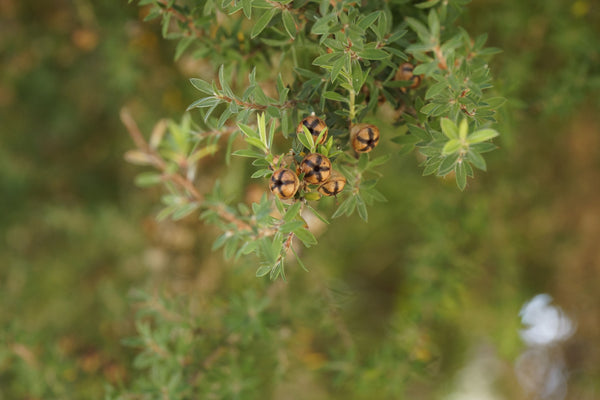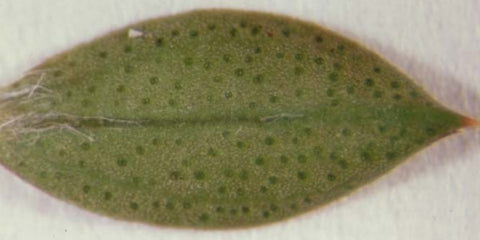Mānuka oil
What is mānuka oil?
Mānuka essential oil is made by distilling leaves and twigs from the mānuka tree (leptospermum scoparium). The oil is extracted from oil sacs on the underside of the leaves by passing steam through the plant material. This steam is then cooled and naturally separates into floral water (hydrosol) and essential oil floating on the surface.
It takes lots of work to produce mānuka oil, as most plant material is harvested by hand from wild mānuka trees. In some areas, plantations are being developed and mechanical harvesters are starting to be used, but this is not as common. The labour cost of producing mānuka oil makes up around 50% of total production costs.
If you would like to learn more about how mānuka oil is produced, check out this guide and pages 29-31 of this guide.
Health benefits of mānuka oil:
Mānuka oil displays extraordinary health properties - it is antibacterial, antiseptic, antifungal, antiviral, reduces inflammation, can be used as an antihistamine, relieves pain, helps wounds to heal by forming scar tissue, improves the immune system, can be used as a relaxant and much more.
Click here to learn more about the health properties of mānuka oil.
Mānuka oil uses:
Mānuka oil can be used as a natural supplement to support the treatment of a wide range of skin and body conditions, such as:
- Mild sunburn
- Oily skin and pimples
- Fungal infections and nail bed infections
- Chafing and rashes
- Itchy scalp and dandruff
- Foot and body odour
- Insect bites and stings
- Athlete’s foot
- Rheumatism
- Eczema
- Psoriasis
- Cold sores
- Jock itch
This is by no means an exhaustive list of ways that mānuka oil can benefit you. For more information about how you can use mānuka oil to help return your skin and body to an optimal state, check out our page on the uses of mānuka oil.
Chemical composition:
There is significant variations in the chemical composition of mānuka oil harvested from different parts of New Zealand. Multiple scientific investigations have concluded that there are 5 main types of mānuka oil (also known as chemotypes) found in the North Island, with similar compositions also found in the South Island:
- Monoterpene rich oils - most commonly found in Northland.
- Sesquiterpene rich oils - commonly found throughout the North Island.
- Monoterpene-sesquiterpene mixed oils - more common north of Hamilton.
- Methyl cinnamate enriched oils - found at two sites in the western part of the North Island.
- Triketone enriched oils - found only in a limited region of the East Cape (also found in the Marlborough Sounds, but oil from these plants contains less triketones).

So what does this all mean?
Without going into extreme detail, it is safe to say that all mānuka oils have a range of excellent health benefits. However, the triketone enriched oils from the East Cape display more powerful antibacterial and antiviral properties than oils from other regions. It has been proven that East Cape mānuka oil kills MRSA (commonly known as the superbug), helps with treating herpes types 1 and 2, and is much more effective at destroying gram positive bacteria than Australian tea tree oil.
Mānuka oil and Australian tea tree oil (melaleuca alternifolia) are often mistaken for each other. However, they are completely different plants with different active chemicals. The antibacterial activity in tea tree oil comes from a compound called terpinen-4-ol, which is not very common in mānuka oil.

